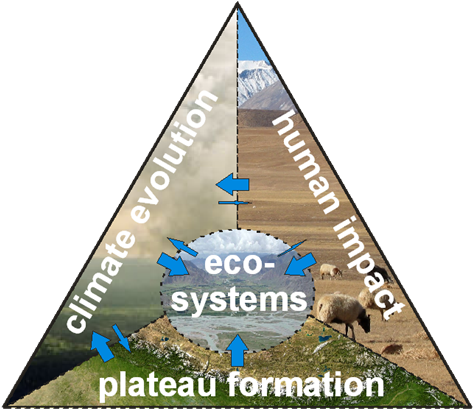Water balance under different surface conditions in Kobresia meadow
WaBaDiS
bis 12/2012Projektleiter: Keith Richards, Siyuan He
The Tibetan Plateau (TP) has one of the most complex climates in the world. Analysis of the water cycle is important for understanding both regional water resources management and global climate change. In Northern Tibet the dominant Kobresia meadow (Kobresia pygmaea) has experienced a lengthy period of drastic degradation. Observation and assessment of water balance and water movement along the soil-plant-atmosphere continuum under various surface conditions is implemented by lysimetry and water stable isotopes. On the premise of soil degradation and the special topographic units of mountain basins, the degradation-induced land cover change alters the moisture fluxes including a suppression of the dewfall, so that evapotranspiration and the energy balance are changed, which then influences cloud formation and precipitation, and therefore may have effects over a wider region.
Publikationsliste dieses Projekts
| He, S; Richards, K: The role of dew in the monsoon season assessed via stable isotopes in an alpine meadow in Northern Tibet, Atmospheric Research (2014), doi:10.1016/j.atmosres.2014.02.014 -- Details |
Siehe auch:
- Experiment: KEMA 2010: Interdisziplinäres Atmosphäre Ökosystem Experiment in Kema, Tibetisches Hochplateau
- Messfläche: Kema: Kobresia Ecosystem Monitoring Area (KEMA) and Naqu Ecological and Environemental Observation and Research Station

